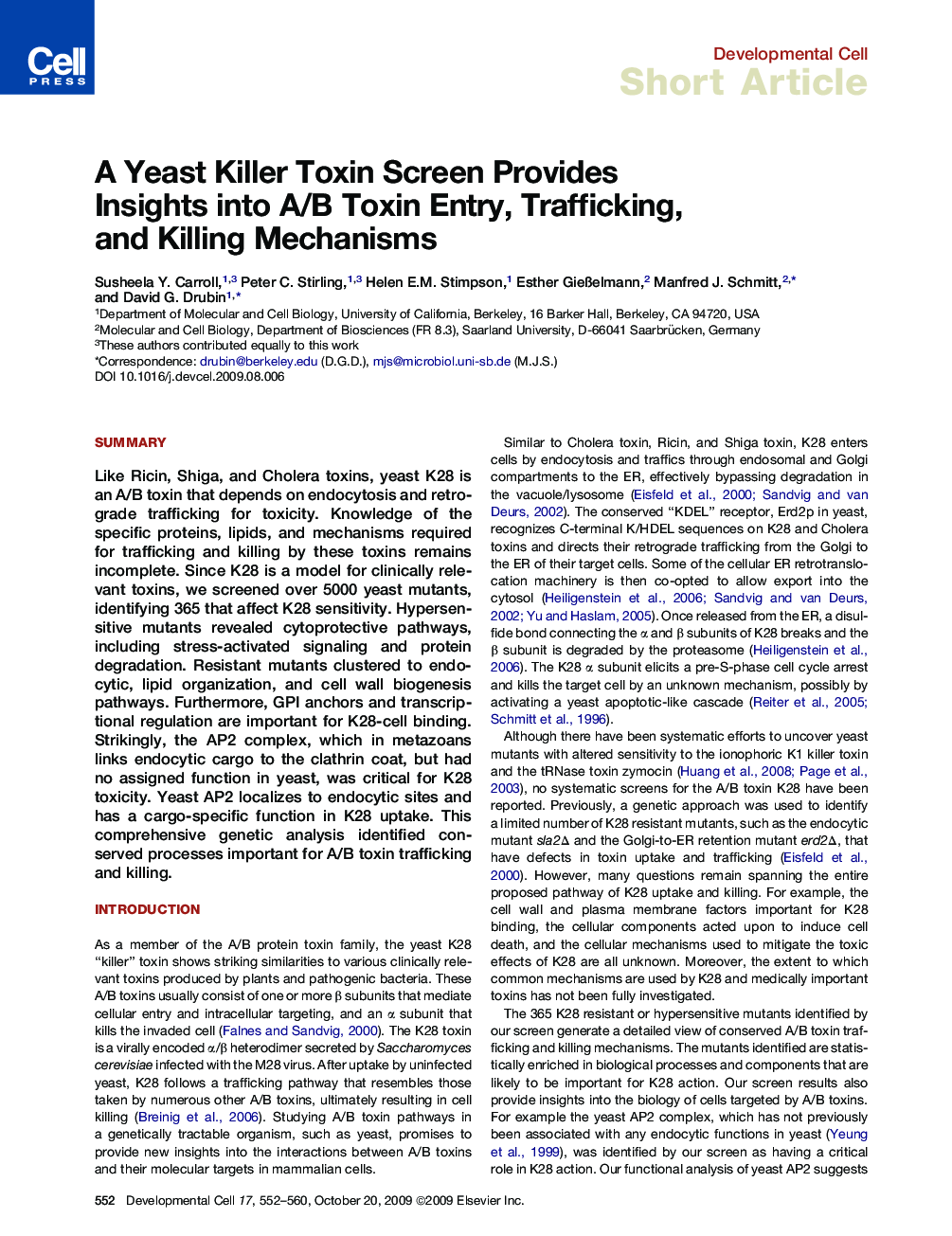| Article ID | Journal | Published Year | Pages | File Type |
|---|---|---|---|---|
| 2177387 | Developmental Cell | 2009 | 9 Pages |
SummaryLike Ricin, Shiga, and Cholera toxins, yeast K28 is an A/B toxin that depends on endocytosis and retrograde trafficking for toxicity. Knowledge of the specific proteins, lipids, and mechanisms required for trafficking and killing by these toxins remains incomplete. Since K28 is a model for clinically relevant toxins, we screened over 5000 yeast mutants, identifying 365 that affect K28 sensitivity. Hypersensitive mutants revealed cytoprotective pathways, including stress-activated signaling and protein degradation. Resistant mutants clustered to endocytic, lipid organization, and cell wall biogenesis pathways. Furthermore, GPI anchors and transcriptional regulation are important for K28-cell binding. Strikingly, the AP2 complex, which in metazoans links endocytic cargo to the clathrin coat, but had no assigned function in yeast, was critical for K28 toxicity. Yeast AP2 localizes to endocytic sites and has a cargo-specific function in K28 uptake. This comprehensive genetic analysis identified conserved processes important for A/B toxin trafficking and killing.
